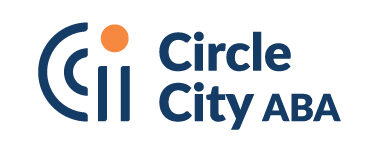Taking care of a child with autism can be overwhelming. However, as parents, we want to ensure that our children are safe and well-cared for while also helping them learn the skills they need to progress in their daily lives.
One way to do this is by implementing replacement behaviors – positive behaviors that replace undesirable ones. In this blog post, we will discuss approaches you can use to implement replacement behaviors for children with autism.
Identifying Desirable Behaviors
The first step in implementing a replacement behavior in ABA is identifying desirable behaviors for your child to engage in instead of undesirable ones. For example, if your child likes to scream when frustrated or upset, you could teach them an alternate behavior, like taking deep breaths or asking for help from an adult.
It’s important to remember that these replacements should be positive and developmentally appropriate; choose activities your child enjoys and within their skill level. Once you’ve identified these desired behaviors, you can start teaching them alternative ways of dealing with more problematic tendencies.
Teaching Autism Replacement Behaviors
Once you have identified a few desired behaviors, it’s time to begin teaching replacement behaviors. This process typically involves breaking each behavior into small steps and then teaching each step separately until the whole behavior is learned. Depending on your child’s needs and abilities, this could involve verbal prompts or visual cues such as pictures or symbols. It may also include using reinforcement or rewards, such as praise or treats, when the desired behavior is exhibited. The key to replacement behaviors in ABA is repetition – the more often the desired behavior is practiced, the more likely it is to become a habit!
Implementing Replacement Behaviors
Once your child has mastered the new behavior, it’s time to put it into practice! This means coming up with ways to remind your child of the new behavior when they’re faced with a situation where they would typically exhibit an undesirable one.
For instance, if your child tends to hit when frustrated or angry, you could set up a “safe space” where they can go when they feel overwhelmed and take deep breaths instead of hitting. With consistent implementation over time and plenty of positive reinforcement when desirable behaviors are exhibited, those replacement behaviors will soon become second nature!
FAQs About Replacement Behaviors in ABA
What is a replacement behavior?
A replacement behavior is typically introduced as an alternative to an undesired or problematic behavior. Rather than have behaviors that limit learning and inclusion, replacement behaviors help promote success and positivity.
How do you teach a replacement behavior in ABA therapy?
Teaching replacement behaviors in ABA therapy involves a tailored and systematic approach that is first taught by conducting an assessment to understand the purpose or function of the behavior. Next, you’ll clearly define the replacement behaviors that you want to teach, while breaking down the behavior into smaller, more manageable steps. From there, practicing is key as the more times the child learns the autism replacement behavior is easier to do, the more likely they’ll continue using that behavior.
What are some replacement behaviors for screaming?
When it comes to alternative ways for children to express themselves outside of screaming, some replacement behaviors we recommend include deep breathing exercises, offering them choices to give them a sense of control, engaging in relaxing activities, or using visual cues to help them regulate their emotions.
What are some replacement behaviors for throwing objects?
Replacing the behavior of throwing objects with other actions can help redirect energy into a more positive outlet. Just some behavior alternatives include engaging in creative art, encouraging balloon play, setting up target games, completing threading or sorting activities, and more.
What are some replacement behaviors for my child running away from me?
The key to addressing this behavior is to determine the reasoning behind it. Causes can range from possibly seeking attention, trying to escape, dealing with a sensory issue, or wanting to get access to something.
With that in mind, some replacement behaviors you can use include teaching them to request a break, raise their hand, or ask for help with a challenging task.
What are some replacement behaviors for vocal stimming?
Some effective autism replacement behavior solutions for vocal stimming can include participation in games or sports, engaging in physical activity, learning soft throwing, and gaining stress relief through items such as stress balls.
What are some benefits of practicing replacement behavior in ABA?
Ultimately, replacing undesirable behaviors with desirable ones can benefit children with autism in many ways. For example, replacement behaviors help them learn how to regulate their emotions better, build trust in relationships between adults and children around them, and increase their overall quality of life.
Of course, implementing replacement behaviors requires patience and consistency from parents, but following these strategies can help make this process easier and more successful in the long run!
The History Behind Replacement Behaviors in ABA
While there isn’t a specified date that autism replacement behaviors were first introduced, there are a variety of discoveries that have helped this technique emerge. These include:
- Early behaviorism (20th century) – Behaviorists John B. Watson and B.F. Skinner advocated for the study of observable and measurable behaviors as a response to introspective psychology. These findings ultimately laid the foundation for the behavioral learning theory, or the understanding of behavior as influenced by environmental factors.
- Operant conditioning (mid-20th century) – B.F. Skinner first described operant conditioning as only looking at the external, observable causes of human behavior. From there, his principles contributed to the development of behavior modification techniques.
- Behavior modification (mid-20th century) – Expanding on the idea of operant conditioning, behavior modification was first introduced to reinforce desirable behaviors while reducing more undesirable ones, much like replacement behaviors do.
- Applied behavior analysis (1960s-1970s) – ABA therapy was first developed in the 1960s by O. Ivar Lovaas. It was during this time that he conducted research, particularly focused on individuals with autism. The progression and reinforcement of replacement behaviors were essential in these interventions.
Contact Us Today for Help with Replacement Behaviors
If you’re looking for additional guidance on how best to support your child through ABA therapy services, look no further than Circle City ABA. We are committed to providing families access to resources tailored specifically for their family dynamic, so all members can reach their fullest potential together!
For more information about how we can best accommodate your child’s needs, contact us today!



